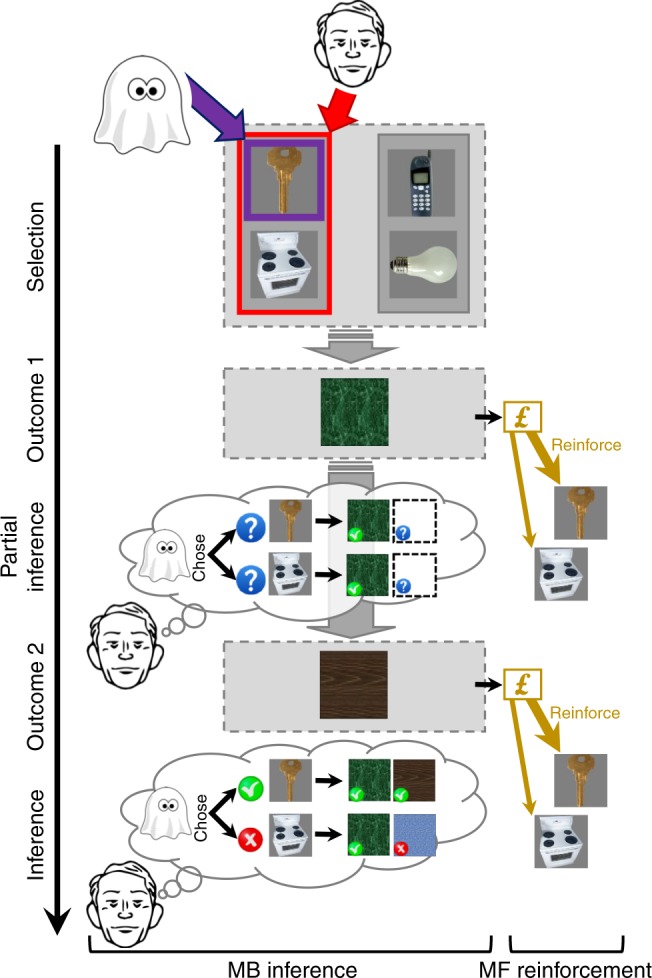Fig. 3.

MB retrospective inference and its effects on MF learning. After the agent choses an object pair (here, left), the ghost nominates randomly (and latently) one of the objects in this selected pair (here, top). The agent, therefore, has a 50–50% belief with respect to the ghost-nominated object. The posterior belief after observing the first (green) outcome remains 50–50% since this outcome is common to both chosen-pair objects. The second (brown) outcome is unique to the ghost-nominated object and hence, a model of the transition structure allows for perfect inference on the ghost’s nomination. We probed different types of standard follow-up trials to examine how the MF system assigned credit to rewards that were obtained on the uncertainty trials. In the absence of any inference about the ghost’s nomination, learning should be equal in strength for both objects in the pair chosen by the subject. Supporting our retrospective-inference theory, we found that an MF assignment of credit received from the second outcome is mainly attributed to the ghost-nominated object (indicated by the thickness of the bottom “reinforcement” arrows). Strikingly, we also found that credit from the first outcome was assigned to a larger extent to the ghost-nominated object (indicated by the thickness of the top “reinforce” arrows). Images adapted from the stimulus set of Kiani et al. 2007, ref. 40
